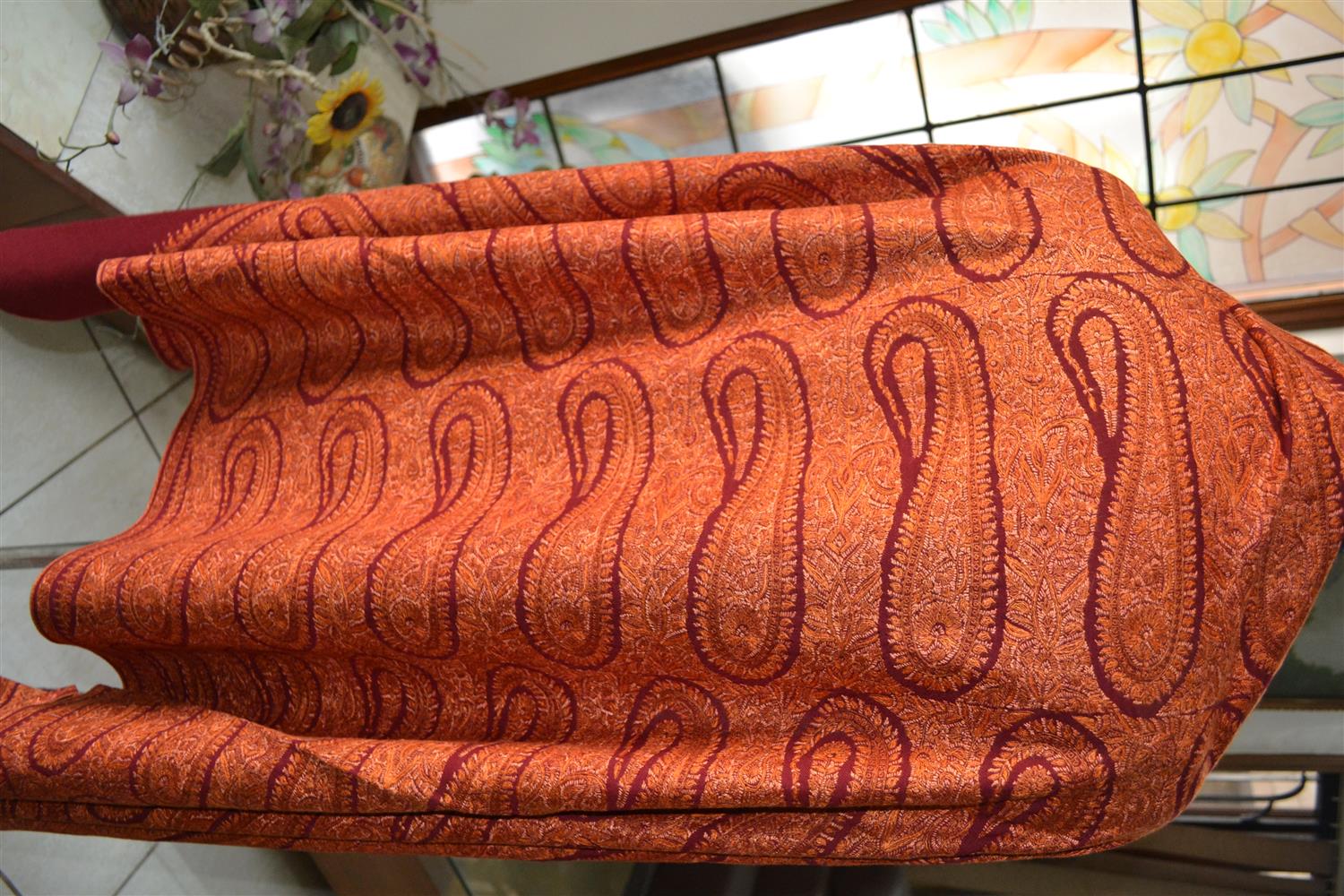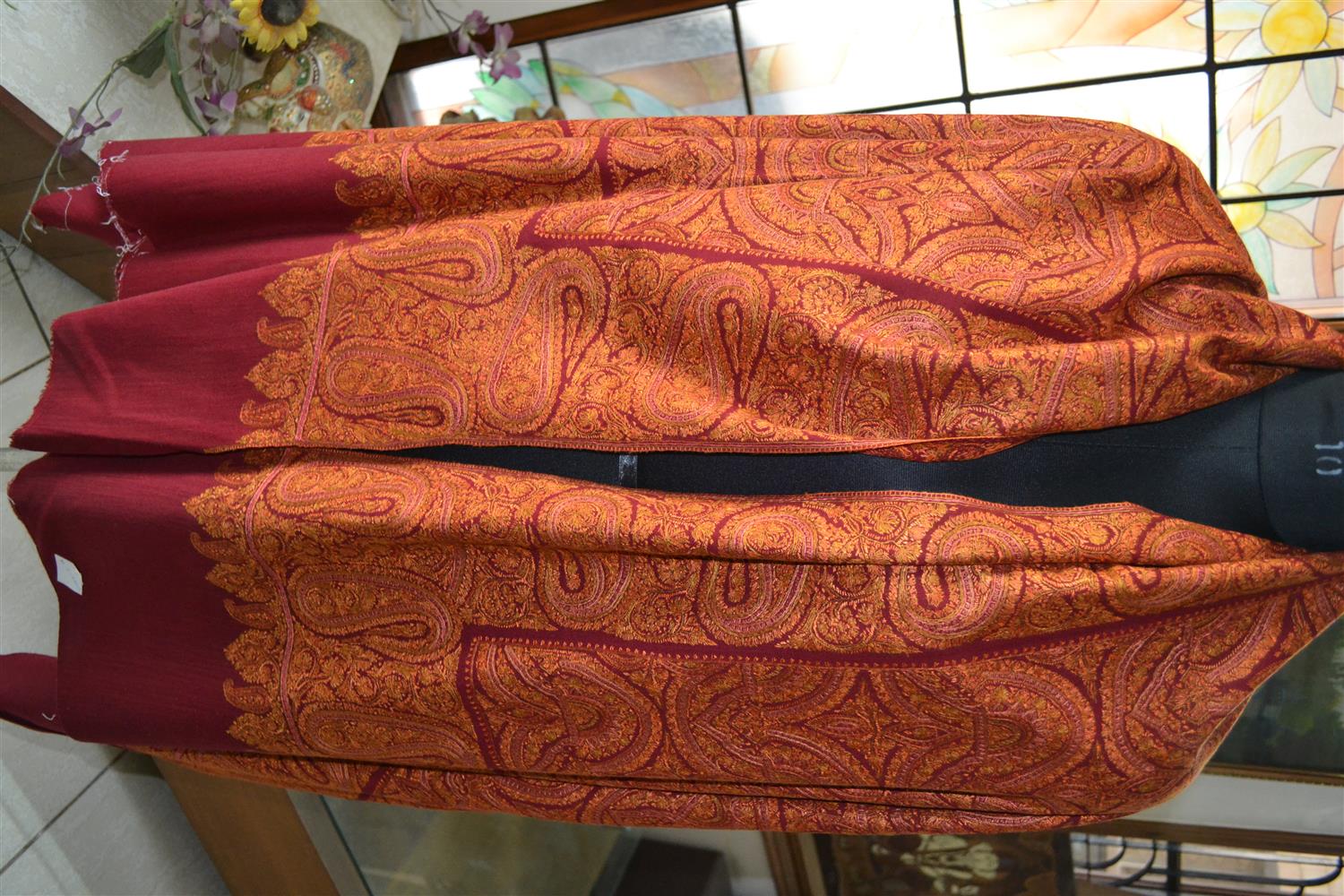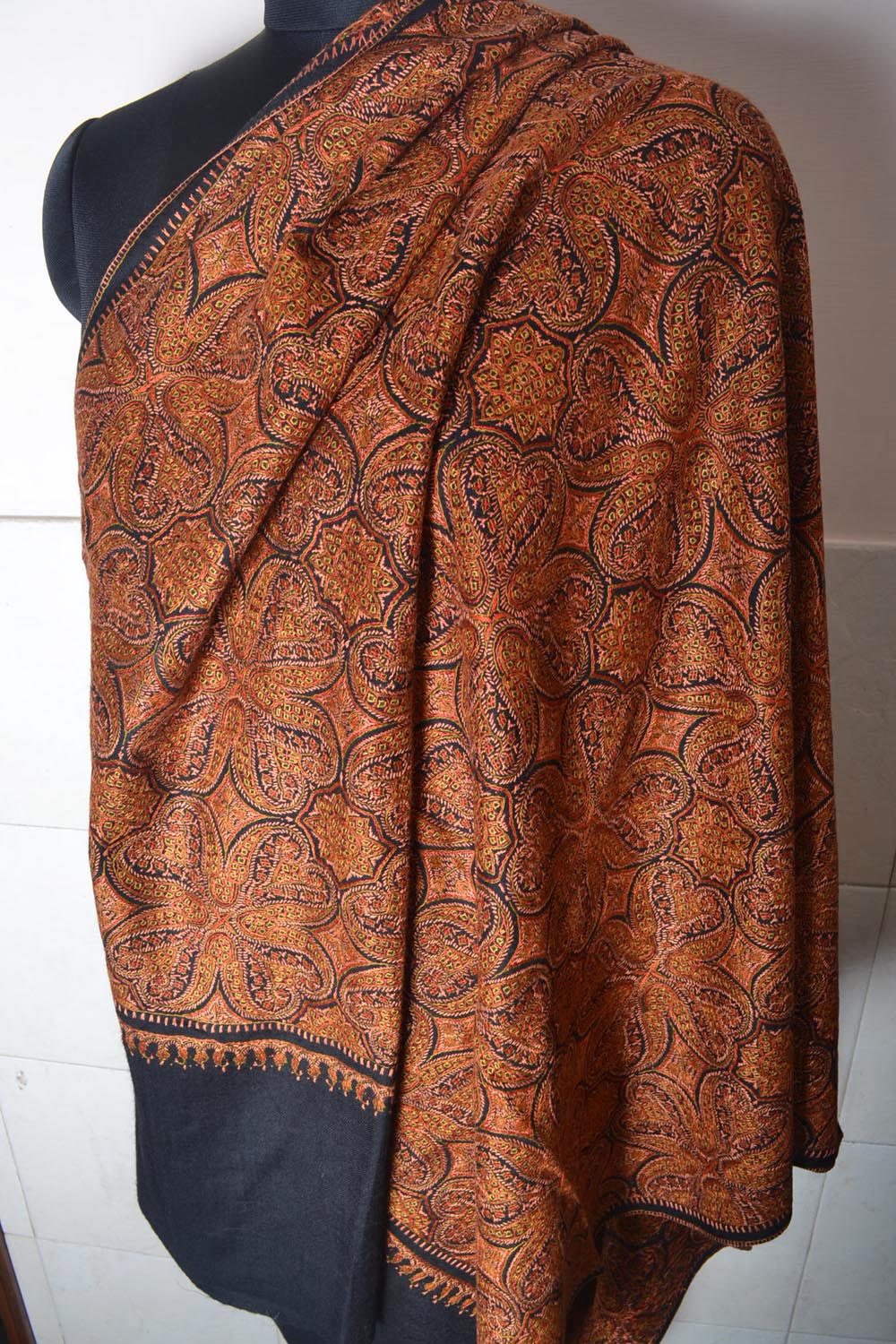 |
GOLDEN: THE ONLY BRANDED PREMIUM PASHMINA SHAWLS COMPANY
offers you JEWEL OF KASHMIR, the real hand embroidered KASHMIRI SHAWL
" THIS ITEM IS MADE BY MASTER CRAFTSMAN, RAREST FINEST WORK IN EMBROIDERY"
THE DESIGN YOU SEE IS PART OF A VERY VERY BEAUTIFUL UNIQUE LOVING , WILL BOOST YOUR PERSONALITY WEARING IT, A SENSE OF CONFIDENCE THE DESIGN IS MOST UNIQUE LIKE THE FINEST PAISLEY DESIGN VERY INTRICATE , LARGEST MOTIFS , ORIENT DESIGNING, INDIAN CULTURE WOVEN IN WEAVE OF PASHMINA IN KASHMIR, INDIA
Quality: Finest Quality 100% pure cashmere pashmina very intricate design
MADE IN KASHMIR INDIA
SIZE: 40x80 INCHES or 100x200 cms
RETURN POLICY: we guarantee you refund or exchange if you are not satisfied.
COMPARE THIS PASHMINA TO THE BEST AVAILABLE IN WORLD AND THIS PIECE IS AMONGST THEM.
AND SEE WHAT THE REAL PASHMINA.
WHY ITS CALLED PRICELESS!!!!!!!!!!
- Shipping by courier to anywhere in world
- Phone number/mobile is must for shipping by Courier
- Insurance is provided FREE to all destinations.
- Import duties, taxes and charges are included in the final purchase price by eBay.
- You will get door delivery so need not worry about extra taxes.
- The customer is responsible for the returned shipment cost.
- We accept returns within 7 days of delivery
- The returned item must be unused and in its original condition.
- The money will be refunded as soon as the returned item arrives.
LIFE IS FUN AND GOOD CLOTHES ARE SOURCE OF CONFIDENCE AND ENJOYMENT. PASHMINAS ARE A FASHION AND FASHION IS PASSION. BUY PASHMINAS WEAR IT EVERY MOMENT AND CHERISH SWEET MEMORIES AND GIFT IT FOR YOUR DEAR ONES AND THEY WILL LOVE YOU MORE.
For other colors, designs, embroideries, fashionable pashminas, see my store
GOOD LUCK,REGARDS.
Thanks
There is lot of illusions of Pashmina in west and most sell everything in guise of Pashmina.
To learn about Pashmina CLICK HERE
We guarantee quality description and safe delivery. We are promoting sale of Pashmina Shawls for Kashmiri people who are having tough time with no sales due to war like conditions here.
E MAIL US IF YOU WANT
AH !BEAUTIFUL SHAWL OF MY DREAM
HAND WOVEN ALL OVER , TAKE SEVERAL MONTHS TO EMBROIDERY ONE
The Kashmiri Shawl
Contents: Preface. 1. The many faces of the Kashmiri shawl: Its allure, variety and impact on design. 2. The life and times of the Kashmiri shawl: A social history. 3. The other side of Paradise: The human face of the Kashmiri shawl. 4. The shawl in Persia: A regional development. 5.The end of princely patronage: Indian courts, culture and the loss of Empire in Awadh. 6. The Punjab shawl: An untold story. 7. A master craft: The making of a Kashmiri shawl. 8. The flowering garden: The Amli shawl. 9. The design evolution: How to date a Kashmiri shawl. 10. The European challenge: The Jacquard option. Bibliography. Glossary. Index.
"The Kashmiri shawl is rooted in a complex craft tradition that goes back at least five hundred years. Its uniqueness lies in a combination of factors that have made it virtually impossible to duplicate anywhere else. Imitations have abounded for centuries, but none has succeeded in producing the inimitable delicacy of warp and weft, of material and design that comprise the legendary beauty of the jamavar shawl. Enduring as a design classic that has grown out of an indelible local aesthetic, the shawl's appeal lies in its ability to represent continuity as well as change.
The Kashmiri Shawl is the story of this textile re-told through the prism of a South Asian perspective. The book realigns the design symbolism and technical evolution of the shawl to indigenous sources by emphasizing areas previously ignored in earlier histories. The shawl's origins in Kashmir, the rich vein of patronage it thrived on, its changing ornamental face, its regional variations in Persia and Punjab, its enormous impact on the European imagination, all combine to form a narrative shaped to engage both the general reader and the specialist.
The authors bring fresh clarity to the many myths that have arisen around the Kashmiri shawl on the South Asian trade circuit. They also elucidate most of the complexities in the Kashmiri shawl lexicon. Today, possessing one of these jewel-like collectables is like owning a tiny stake in the heritage of its many-layered cultural identities." (jacket)













